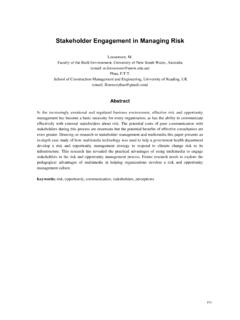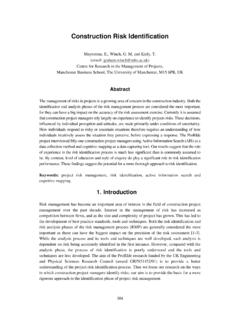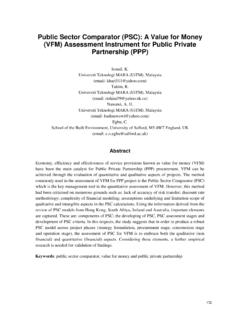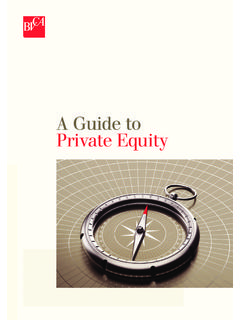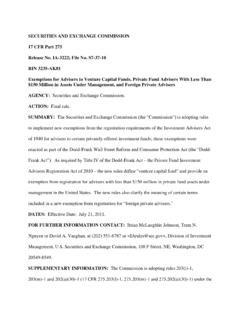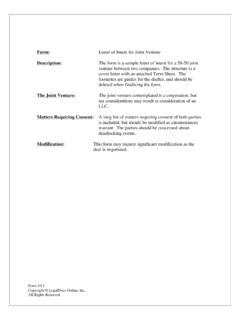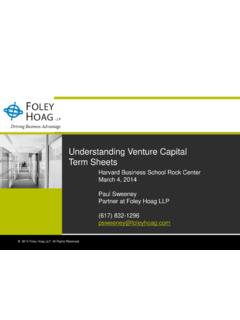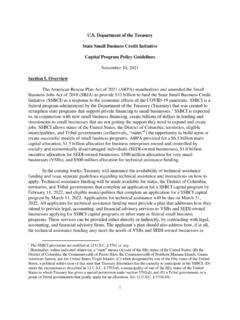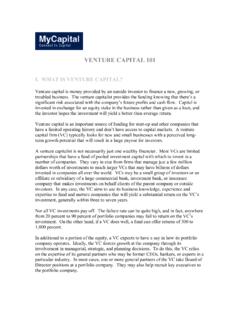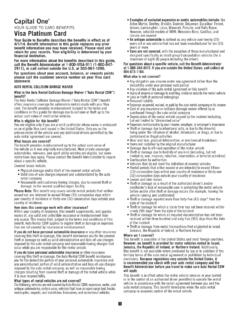Transcription of Construction Joint Venture Contracting
1 Construction Joint Venture Contracting Veerasak Likhitruangsilp, Assistant Professor, Department of Civil Engineering, Chulalongkorn University, Bangkok, Thailand Email address: Apichart Prasitsom Doctoral Student, Department of Civil Engineering, Chulalongkorn University, Bangkok, Thailand Email address: Abstract Joint Venture (JV) has become a common business form for Construction contractors in large infrastructure projects worldwide. The success of Construction JV management depends upon several factors, especially relevant law and contract, which are usually more complicated than those of typical Construction projects.
2 This paper presents primary considerations for preparing Construction JV agreements. Key JV management issues were summarized by reviewing related literature and interviewing 14 JV executives of seven leading Construction firms in Thailand. It was found that the life cycle of Construction JV projects consists of four major phases: (1) the beginning phase, (2) the formation phase, (3) the operation phase, and (4) the termination phase. In each phase, all JV partners have to make several critical decisions, including objectives of participation, selection of partners, their contributions, and administrative forms of JV, all of which directly affect their Construction JV agreements.
3 Three types of Construction JV agreements generally used in the industry are the memorandum of understanding (MOU), the pre-bid JV agreement, and the JV agreement. The MOU is made to informally establish a JV so that the contractors can obtain bidding documents from the owner whereas they are not strictly bound by such agreement. If the contractors are interested in bidding, the pre-bid JV agreement will be prepared to specify the scope of work and cost sharing for each JV partner while preparing their bid proposal.
4 Finally, if the contract is awarded to the JV, the formal JV agreement will be executed to stipulate legal rights and liabilities in the project of every JV partner and will also be included as part of the Construction contract between the JV and the owner. The paper summarizes main provisions in these agreements and identifies primary considerations while drafting them. The results can directly be used by all contractors for drafting and administrating JV agreements to maximize the efficacy of JV project management.
5 1. Introduction Joint Venture (JV) can be referred to a form of business undertaking by two or more persons engaged in a single defined project (Garner, 2004). In the Construction industry, JV has become a common form of business, which is generally adopted by the contractors of large Construction projects worldwide because it can enhance their competitiveness by pooling Construction resources ( , capital , equipment, and expertise) from the partners (members) as well as allocating risk among the partners.
6 Moreover, it is normally mandatory by public owners of large infrastructure projects for bidding contractors to be established in this business form [ , provisions in the project s term of reference (TOR)]. JV project management is extremely challenging for all contractors due to several factors, especially relevant law and contract, which are usually more complicated than those of typical Construction projects. For the countries where there is no specific law on JV ( , Thailand), the legal rights and liabilities among JV partners as well as between the JV and third persons are often ambiguous (Likhitruangsilp and Mekkriengkrai, 2007).
7 Since Construction Joint ventures are usually established by an agreement between two or more contractors to jointly execute a certain Construction project, they are formed as contractual (unincorporated) JVs, rather than corporate (incorporated) JVs. JV agreements must be prepared meticulously to maximize the interests of all JV partners and the JV itself as well as to minimize risk inherent in the project. This paper presents primary considerations for preparing Construction JV agreements.
8 Key JV management issues were summarized by reviewing related literature and interviewing 14 JV executives of seven leading Construction firms in Thailand. Major decisions by JV partners in each major phase of the Construction JV project lifecycle were collected and related to the contents of Construction JV agreements. The paper then explores three types of Construction JV agreements generally used in the industry, namely, the memorandum of understanding (MOU), the pre-bid JV agreement, and the JV agreement by focusing on main provisions in these agreements and primary considerations while drafting them.
9 2. Life Cycle of Construction Joint Venture Projects The entire lifecycle of Construction JV projects consists of four major phases: (1) the beginning phase, (2) the formation phase, (3) the operation phase, and (4) the termination phase, as illustrated by Figure 1. In each phase, every partner has to make several critical decisions, which directly affect JV management and in turn JV agreement drafting. The details of these decisions are as follows. Figure 1: Life cycle of Construction JV projects Beginning Phase The principal concept of a Construction JV is the unification of two or more contractors that mutually agree to engage in a particular project.
10 Thus, two main processes Construction JVs must involve are investment decisions and selection of the partners. Before joining other contractors to form a Construction JV for a particular project, each contractor has to make several investment decisions, including establishing its objective of JV participation, performing research on the project, analyzing its current status ( , asset, financial, and amount of work on hand), as well as evaluating all available investment options and choosing the best one.



